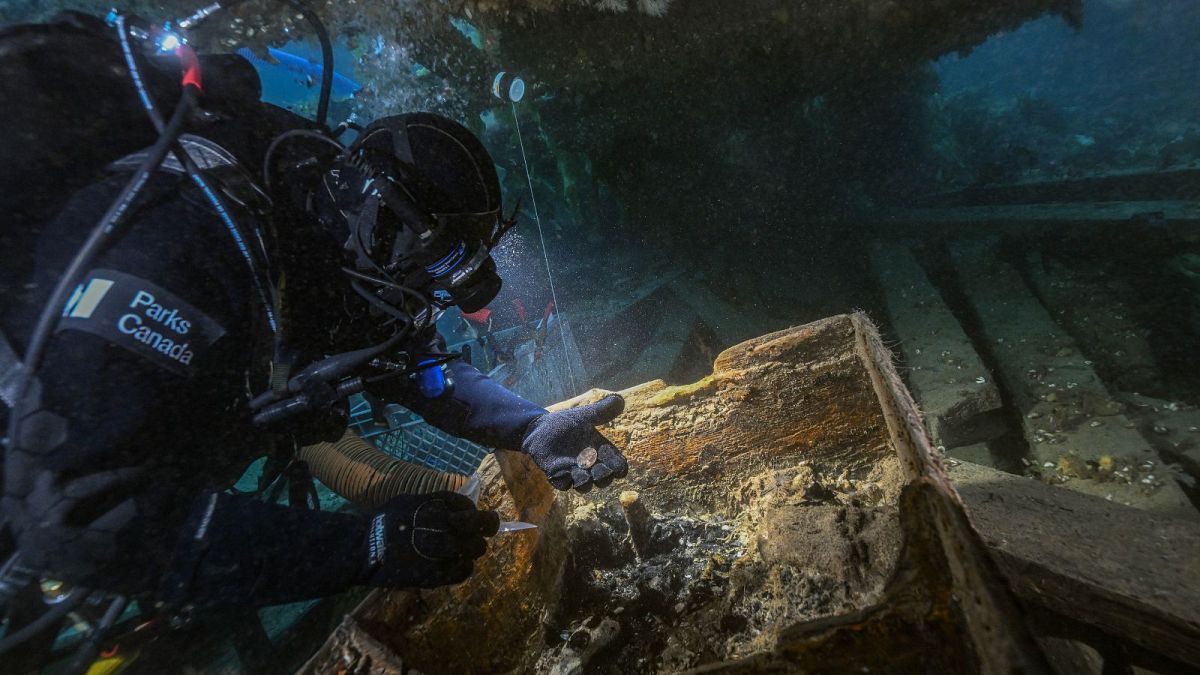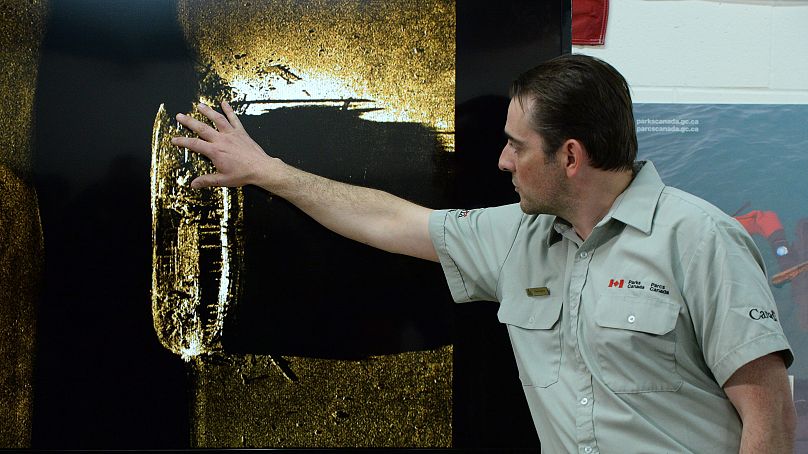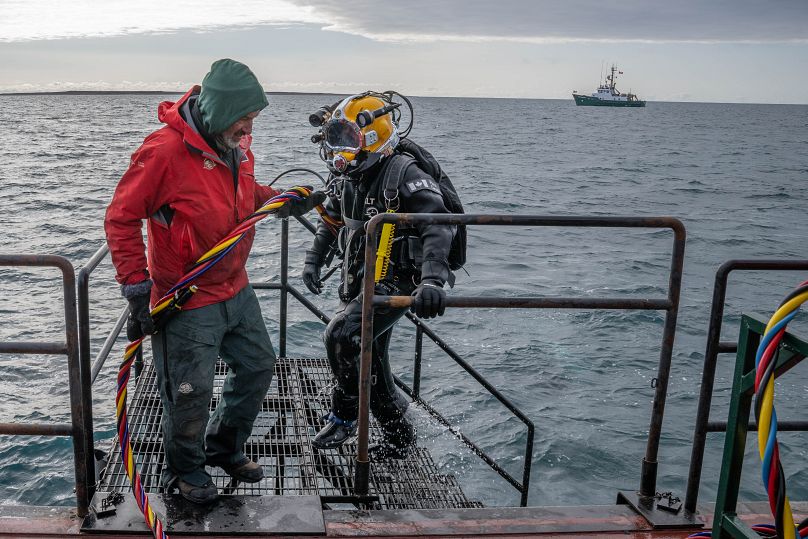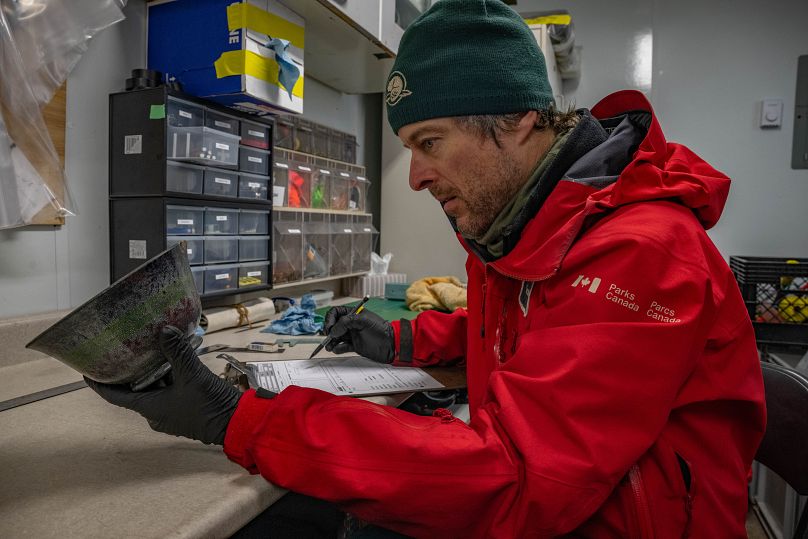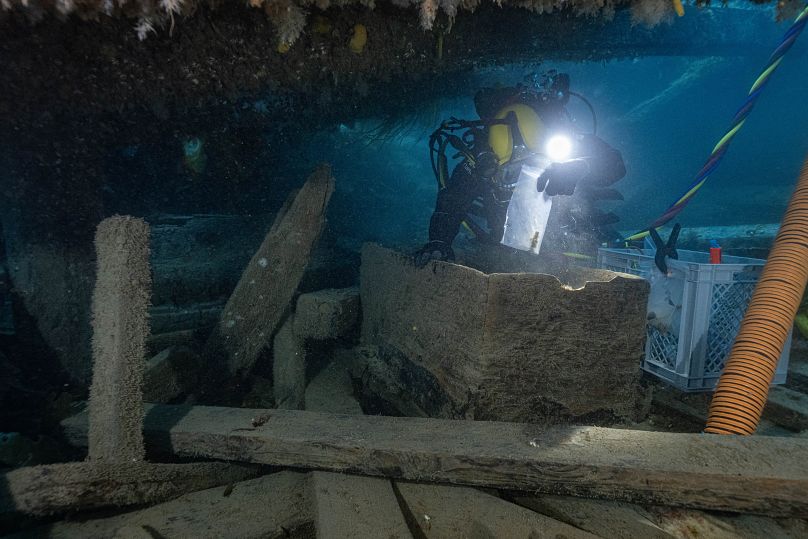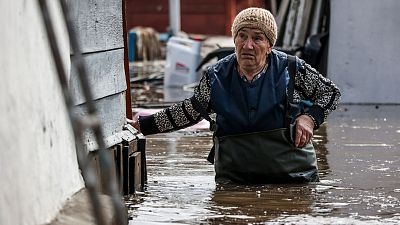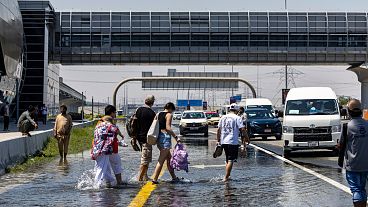Severe storms are another twist in the horrifying tale of these British ships wrecked in the Canadian Arctic nearly 180 years ago.
Marine archaeologists are in a race against time to uncover the secrets of an ill-fated British ship from the nineteenth century.
Almost 10 years ago, the husk of HMS Erebus was discovered on a shallow stretch of seabed in the Canadian Arctic. Two years later in 2016, its sister ship HMS Terror was found 72 kilometres away in deeper waters.
So ended a more than 150 year search for the two vessels which set sail in 1845, on a mission led by Sir John Franklin to find the Northwest Passage between the Atlantic and Pacific Oceans. None of the 129 men on board survived the journey - and details of their grim end have been passed down in Inuit legend.
The recent discoveries “opened up an ocean’s worth of questions,” says Parks Canada, the government agency which is studying the wrecks alongside Inuit researchers.
But climate change may thwart their search for answers, according to the latest report. The wreck of Erebus is now being buffeted by increasingly severe storms, catalysing its ruin and making the annual dives more difficult.
“Parts of the ship’s upper deck collapsed recently and other parts are sloping over dangerously,” Jonathan Moore, manager of the Parks Canada underwater team that completed the 2023 exploration, told UK newspaper The Guardian. “It’s getting tricky down there.”
What happened to HMS Erebus and HMS Terror?
Franklin’s lost expedition, as it’s known, was waved off from the Kent coast in 1845 with the 59-year-old British Royal Navy officer and Arctic explorer aboard Erebus.
Previous voyages had left less than 500 km of Arctic coastline to explore, and the Victorians were keen to find a possible new trade route through the maze of ice. The vessels were fitted with new steam-driven propellers to help them steer through pack ice, and their holds filled with three years’ worth of tinned provisions.
HMS Erebus and HMS Terror were last observed by whalers sailing into Lancaster Sound in July 1845, and never heard from again.
In the 1850s, Scottish explorer John Rae found out from speaking to Inuits that Franklin had died in 1847 after the ships became trapped in sea ice for two years near King William Island, in what is now the Nunavut region of Canada.
He was also told that the surviving men - who abandoned the ships in 1848 - had begun to eat each other as they died of starvation, hypothermia and scurvy. These reports of cannibalism scandalised Victorian society back home, and were fiercely rebuffed by Franklin’s widow Lady Jane and her supporter Charles Dickens.
But recent evidence suggests this was, tragically, true. The bones of crewmen discovered on King William Island bear marks consistent with them being cut up and eaten.
Passed down through generations, Inuit traditional knowledge was also integral to the eventual discovery of the wrecks. “Their stories about the expedition were vivid and detailed but were dismissed in the 19th century because Inuits were considered to be savages,” Canada Parks’ Ryan Harris told The Guardian in 2014 after his discovery of the first ship.
“In fact, they were providing extremely accurate information, we now realise. The discovery of Erebus in our southern search area completely vindicates what they had been saying. The ship is exactly where they said it had sunk.”
The wreck of HMS Erebus lies just 11 metres deep on the sea bed of Queen Maud Gulf. HMS Terror is also at a relatively shallow depth of 24 metres, better preserved in the icy Arctic waters of Terror Bay. Both are national historic sites - the first to be jointly managed by Inuit and Parks Canada.
How is climate change impacting the exploration of HMS Erebus?
When the first shipwreck was found a decade ago, experts hoped that climate change might actually work in the archaeologists’ favour. It was reported that dwindling ice cover in the Arctic would ease search conditions.
According to the Canadian Ice Service, summer sea ice coverage in the Northwest Passage has been generally declining since scientists started taking measurements in 1968. In some years since 2012, sea ice coverage has dropped to zero. Conditions, Parks Canada notes with irony, that “would have been a beachside dream” to Franklin’s men.
Their doomed expedition dovetails in fascinating ways with anthropogenic climate change. They set sail as the Industrial Revolution ramped up, and the rise of greenhouse gas emissions in the atmosphere is now impacting the ships’ last chapter, as the region is hit by stronger storms.
As the agency writes on its website, “the Arctic of John Franklin’s time was not the Arctic of today.”
Erebus is more vulnerable to storm damage, so Canada Parks’ archaeology team are concentrating their efforts on investigating this wreck first. New technologies are helping; equipped with heated suits, the team were able to make 68 dives over 12 days of work at the wreck last September.
Their latest findings include an intact thermometer from an officer’s cabin, a leather shoe and a collection of fossils - all traceable to particular crew members. Many recovered artefacts will be studied and conserved in Ottawa before being returned for display at the Nattilik Heritage Centre in Gjoa Haven, Nunavut.
“The Franklin expedition remains one of the most popular mysteries from the nineteenth century,” says Steven Guilbeault, Minister of Environment and Climate Change and Minister responsible for Parks Canada. “However, thanks to the important work of Parks Canada and Inuit partners, pieces of this mysterious puzzle are being retrieved allowing us to better understand the fascinating events of this incredible expedition.”
The exact sequence of events that led the men to desert their ships in 1848 is still a mystery.
Storm modelling is helping to assess the shipwrecks
To better understand climate-related threats to the shipwrecks - and what mitigation measures are needed - Parks Canada is getting some technical expertise from consulting company Stantec.
It has provided hydrological and storm modelling to the agency, producing a numerical model of current, historical, and future wind and wave patterns that can damage the wrecks.
Climate change is expected to increase the frequency and intensity of storms in the Arctic environment, scientists say. Stantec’s research will help determine the severity of storm events to occur by 2050 in the project area, encompassing the eastern Queen Maud Gulf, Wilmot and Crampton Bay, and the western approaches to Simpson Strait and Terror Bay.
“Stantec is excited to help Parks Canada and its Inuit partners understand the environmental threats to these pieces of human history,” says Darren Kipping, underwater archaeologist and the firm’s project manager. “Understanding what those potential impacts are now, and into the future, can assist Parks Canada and its partners in the study and management of the site.”
Exploring the shipwrecks’ ecosystems
The resting places of HMS Erebus and HMS Terror aren’t just of interest to archaeologists and historians wanting to get to grips with naval life from the 1800s.
Marine biologists are also fascinated by current life within the wrecks. These artificial reefs are home to a diversity of organisms from the region, Parks Canada says, including algae, sponges and molluscs.
“Future study of Terror may well uncover a different suite of species, because it rests in a different location, in deeper, darker, and colder water,” the agency writes.
“Analysing the ecology of these artificial ecosystems will provide important information about what influences Arctic marine life, and how marine organisms have influenced the wrecks.”
For Europeans, an enduring fascination with the shipwrecks is a remote entry point into Nunavut - a region more badly impacted by the climate crisis than most. Nunavummiut (the Indigenous peoples of Nunavut) have existed in a closely bonded ecosystem with ice, land, sky and wildlife for centuries.
Among the changes set to alter the environment, the Nunavut Climate Change Centre notes that decreasing ice could increase shipping traffic through Arctic waterways - including the Northwest Passage - which raises the risk of oil and chemical spills.
The resource centre features voices from the land, and provides information about adaptation measures that communities can take, as their unique survival skills meet new challenges.
